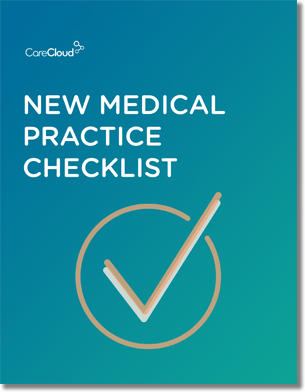Although implementation seems like a universal term that translates across all software acquisitions, this couldn’t be further from the truth. The implementation process of Company A isn’t necessarily the same process as Company B’s.
Among health IT vendors, there are distinct differences in approach, customer service and training procedures that have a significant impact on software satisfaction.
When shopping for a new technology solution, practices have to be aware of what to look for in a vendor’s implementation process that will make software adoption as painless as possible.
Looking for answers, we asked the experts at CareCloud to help us understand what encompasses an easy and effective implementation.
“What ultimately separates a successful implementation from a bad one is expectations and a timeline that is clearly defined,” said Michael Pepe, Project Manager at CareCloud. “Without proper expectations and transparency, the client feels powerless, which in turn leads to confusion and stress.”
Customer Service
According to Pepe, a solid relationship between the practice and vendor is key component to a successful implementation.
Alina Freyre, CareCloud’s Manager of Small Group Implementation, agrees. Her team schedules weekly phone calls with practice managers to establish timelines and tasks for the week.
“It is important to set proper expectations on the kick off call, so both the Implementation Specialist and the client respect each other’s schedule. Customer service should be the number one aspect in any implementation,” said Freyre.
For Freyre, a great customer service experience is reliant on structure and transparency.
Time Frame
The amount of time it takes to implement new health IT software depends on the size of the practice and the specific vendor.
At CareCloud, Pepe recommends a 45 to 60 day implementation cycle for smaller groups. But larger groups have many more moving parts, so the implementation process tends to last a little longer.
“It’s important to be flexible, but it’s also important to establish guidelines. A big change like a new EHR is very turbulent for practice, so the clearer you can be about implementation timelines, the better for everyone,” said Pepe.
Training
Training is another process to take into account during implementation. While some vendors boast a speedy implementation period, this normally doesn’t include training staff on how to use the new system.
“There is nothing worse than starting a new system and not being trained,” said Freyre. “Most clients are so used to their old workflow, if they’re not trained correctly it becomes a disaster.”
The implementation timeline should include the entire life cycle of implementing a new system — from the time of kick off to training to go live.
Ultimately, a practice needs to focus on more than just features. Successful implementation is just as important, and every IT vendor approaches the process differently. Some walk you through the process, while others just hand you a manual and wish you well.
Before purchasing new health IT software, be sure the vendor provides you with a clear, concise and realistic plan for total implementation.

Do you know what you need when setting up a new medical practice?



